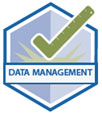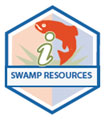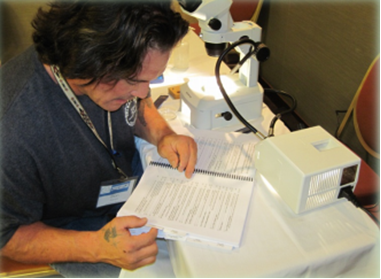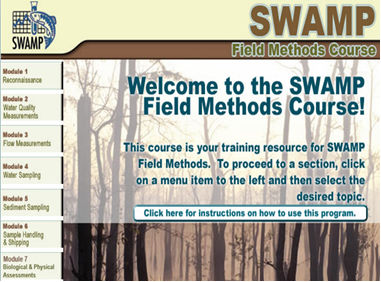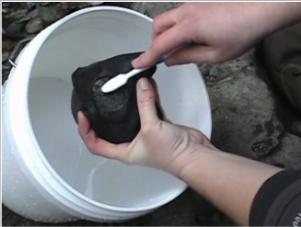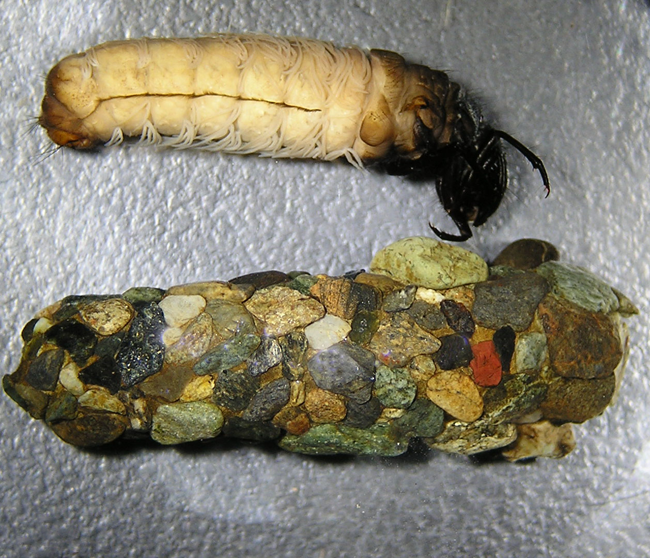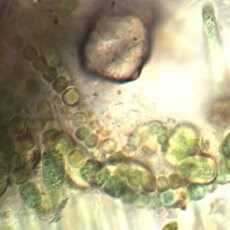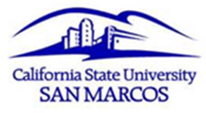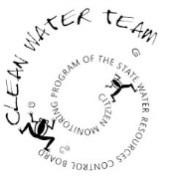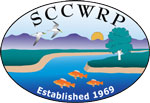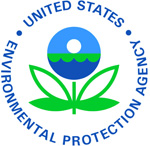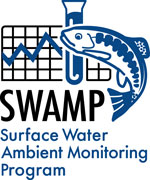
SWAMP IQ Bioassessment
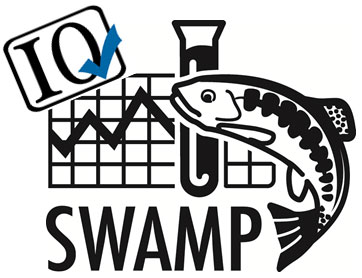
About Bioassessment
Biological assessments (bioassessments) are a way to evaluate the health of a stream by looking at the overall physical habitat and the organisms that live there. Because the organisms are exposed to environmental stressors constantly within their environment, studying their presence, type, and numbers can reveal information about the current habitat conditions and changes over time. Benthic macroinvertebrates (BMI) and algae are indicators commonly used for bioassessments in California.
Benthic Macroinvertebrates (BMIs)
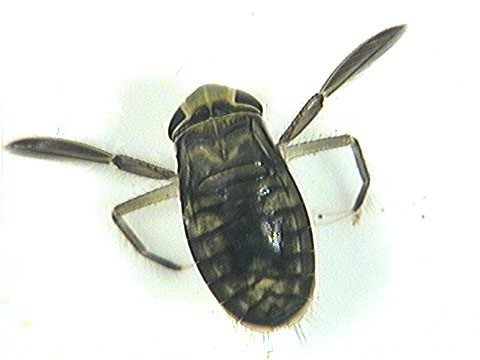
BMIs are aquatic animals that are large enough to be seen without a microscope. They live at the bottom (on or in the sediment) of rivers and streams and are comprised mostly of aquatic insects but also include crustaceans, mollusks, and worms. BMIs are found in most waterbodies and are reliable indicators of biological health because they are relatively stationary and respond predictably to a variety of environmental stressors. Certain types of BMIs are more sensitive to pollutants in water than others. When sensitive species are exposed to unhealthy conditions, their population densities are expected to decline, while populations of pollutant-tolerant species are expected to thrive. Therefore, water quality can be assessed by looking at the types and abundances of different insects present in the sample.
Algae
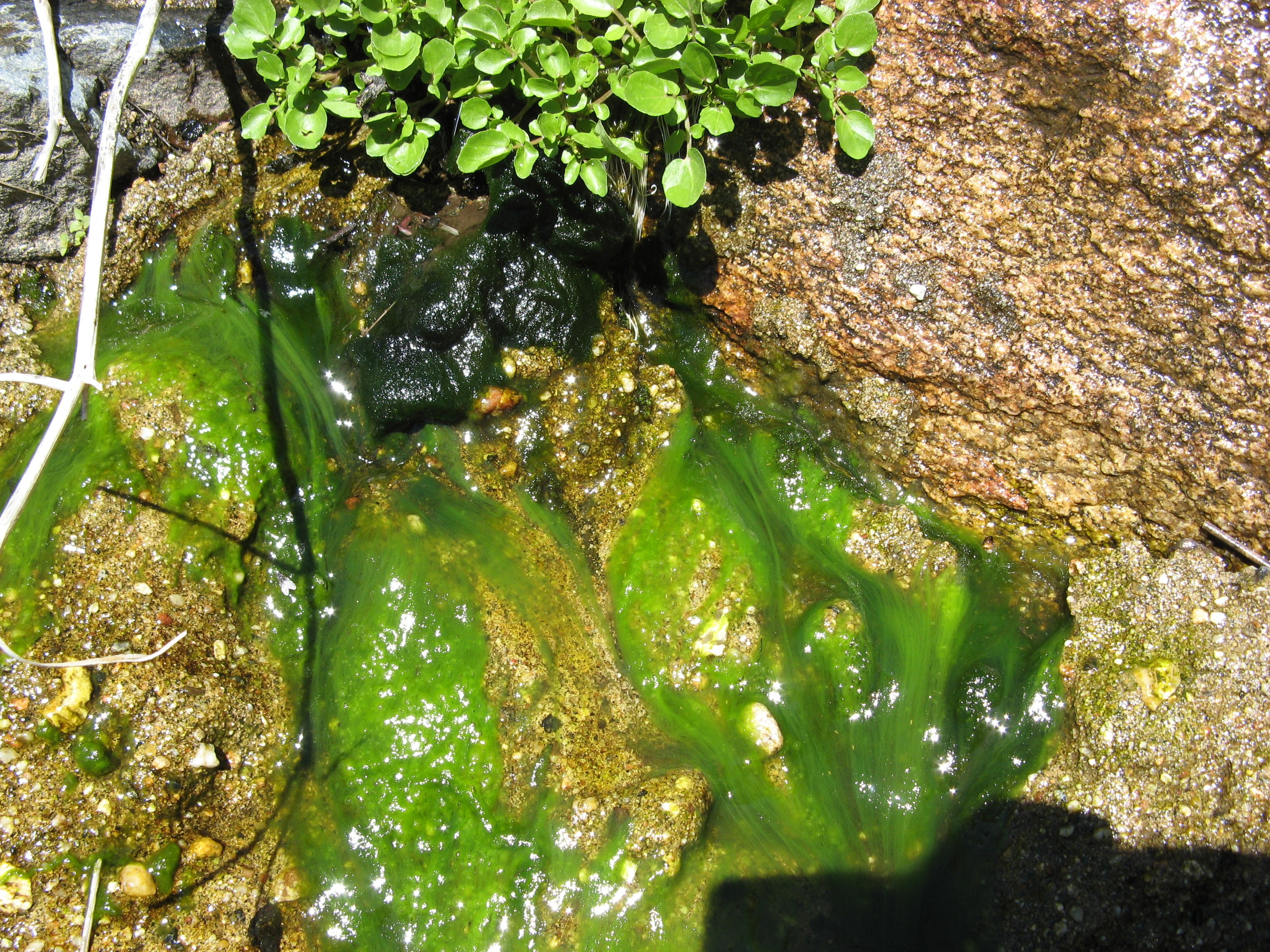
Similar to BMIs, algae are also a valuable component for evaluating water quality. As primary producers, algae comprise a key component of the base of aquatic food webs, and are ecologically important in numerous ways. Because they are highly responsive to water quality (especially nutrients), they can be used, alongside BMI, as water-quality indicators to provide a more comprehensive view of stream condition than BMI alone. They also respond faster to environmental stress than BMIs, which make algae a good indicator for short‐term environmental stressors.
Physical Habitat
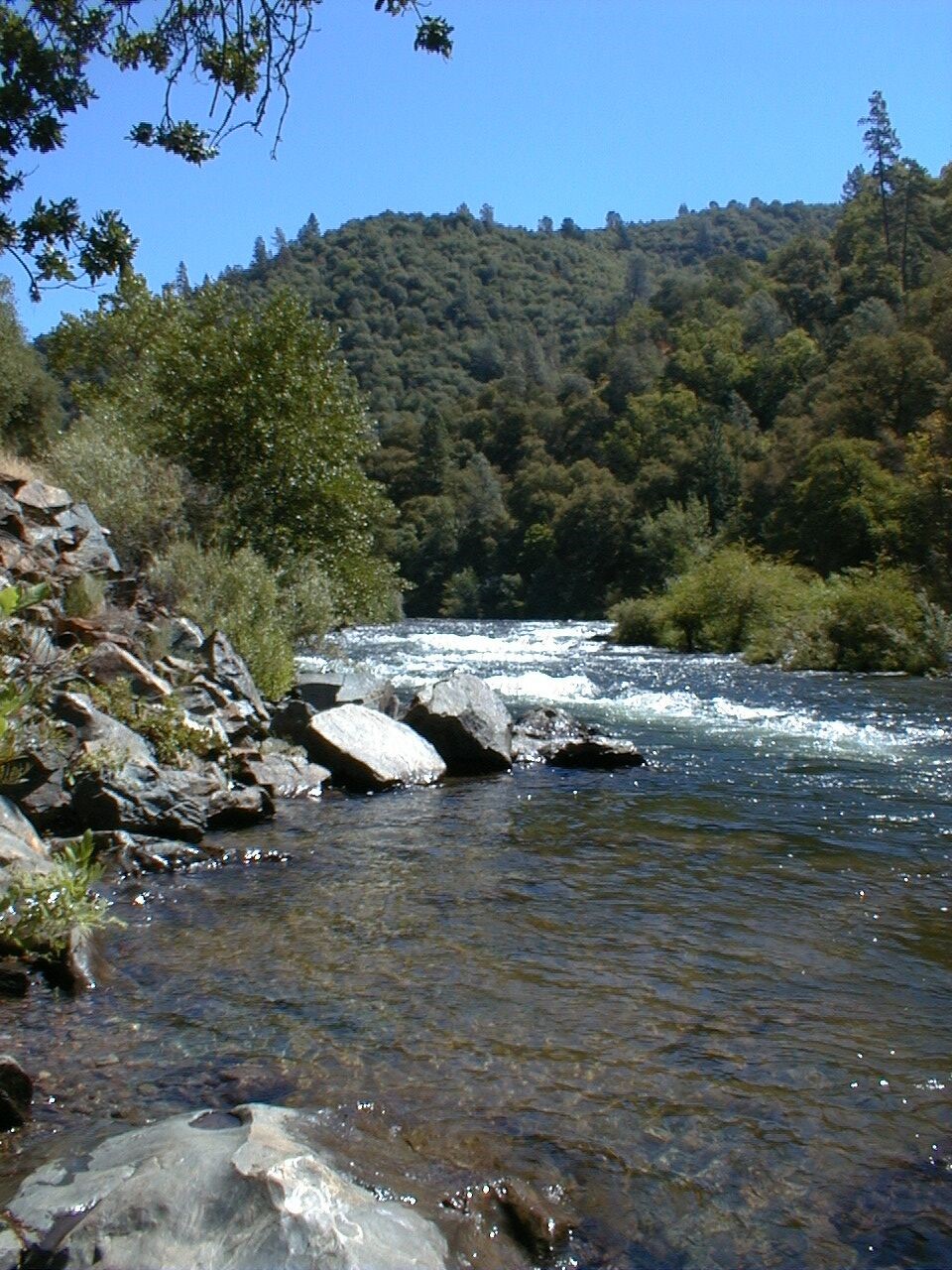
Measurements of instream and riparian physical habitat and ambient water chemistry are also essential to interpretation of biological data. This information can be used to characterize stream reaches, associate physical and chemical condition with biotic condition, and explain patterns in the biotic data.
Data Analysis
Both BMI and algae are collected in the field at strategic locations in a water body and are taken back to the laboratory to be taxonomically identified and enumerated (counted). Once all the identifications and counts have been completed and the physical habitat data has been recorded, scientists then use that information to compare the biological and physical makeup of that site to reference sites that are of good health and are under little to no human or environmental stressors.
This comparison is done using mathematical and biological formulas to create site “scores”, the California Stream Condition Index (CSCI). Bioassessment scores are used by the Water Boards to assess the health of streams, identify stream condition trends overtime, to support management decisions for monitoring, restoration and protection efforts, and report findings to the public. Bioassessment scores, or CSCI, are also used to place reference water bodies (high quality waters) that pass certain criteria, on the 305(b) list. Water bodies that pass certain criteria, but generally score poorly, and are also associated with another pollutant are put on the 303(d) list of impaired waters.
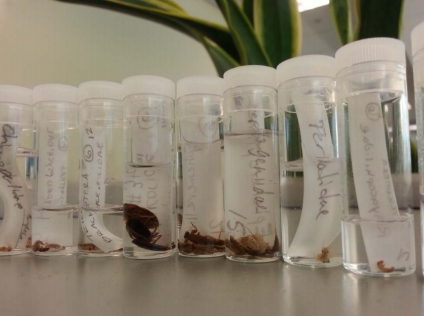
The Surface Water Ambient Monitoring Program (SWAMP) monitors Biological Assessments through the statewide Perennial Streams Assessment (PSA) and Reference Condition Management Programs (RCMP). Here is a link to the SWAMP programs/Reports.
 Quality Assurance and Quality Control
Quality Assurance and Quality Control
Answering research questions with a high degree of confidence requires high-quality data. Studies that produce low-quality data undermine project goals and can result in lost time and money. Therefore, it is crucial to ensure data usability through good quality assurance (QA) practices.
QA is comprised of an integrated system of management activities that are developed during the planning phase of a project. These activities are typically detailed in a QA plan that includes quality control (QC) requirements for field collections and laboratory analyses. See the State Board QA/QC webpage for more information about project planning.
The Quality Assurance Program Plan (Program Plan) establishes the requirements for collecting data as part of the Surface Water Ambient Monitoring Program (SWAMP). The purpose of the Program Plan is to establish quality assurance (QA) and quality control (QC) standards and procedures to be applied to SWAMP projects in order to produce data that are scientifically valid and defensible, and of known and documented quality.
Here are some important QA and QC considerations:
Field Quality Control
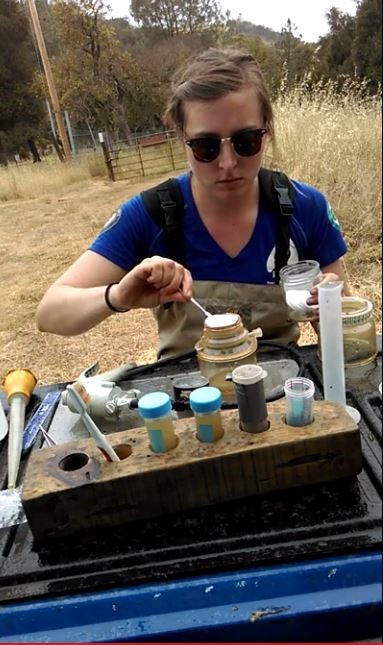
Bioassessment seeks to capture the biological, chemical and physical condition of a stream at a given place and time; therefore the measurements and sample gathering at the site are equally complex. Measurements of in-stream physical habitat, the small buffer of riparian zone adjacent to the stream and ambient water chemistry are essential to interpretation of bioassessment data. The California Rapid Assessment Method (CRAM) is recommended for further assessment of physical habitat outside of the immediate riparian zone.
For field sampling crews, the most important aspect is training. Field crews should spend substantial time before heading out to a site learning the proper procedures. It is also important for field crews to be assigned a lead that can provide expertise in the field. Assigning a lead with expertise will ensure that procedures are consistent and conscientiously executed. To provide further consistency among field sampling crews, it is recommended that crews participate in annual field audits and intercalibration events.
During sample collection, it is important to ensure that appropriate containers, preservation, transport conditions and sample custody documentation is used (where applicable), to assure the quality of biological and chemical samples. Chain-of-Custody (COC) forms are used to help track samples as they switch hands from field crews to laboratory staff. Once samples are received in the lab, they are checked for sample integrity and sample preservation, before being processed.
Laboratory Quality Control
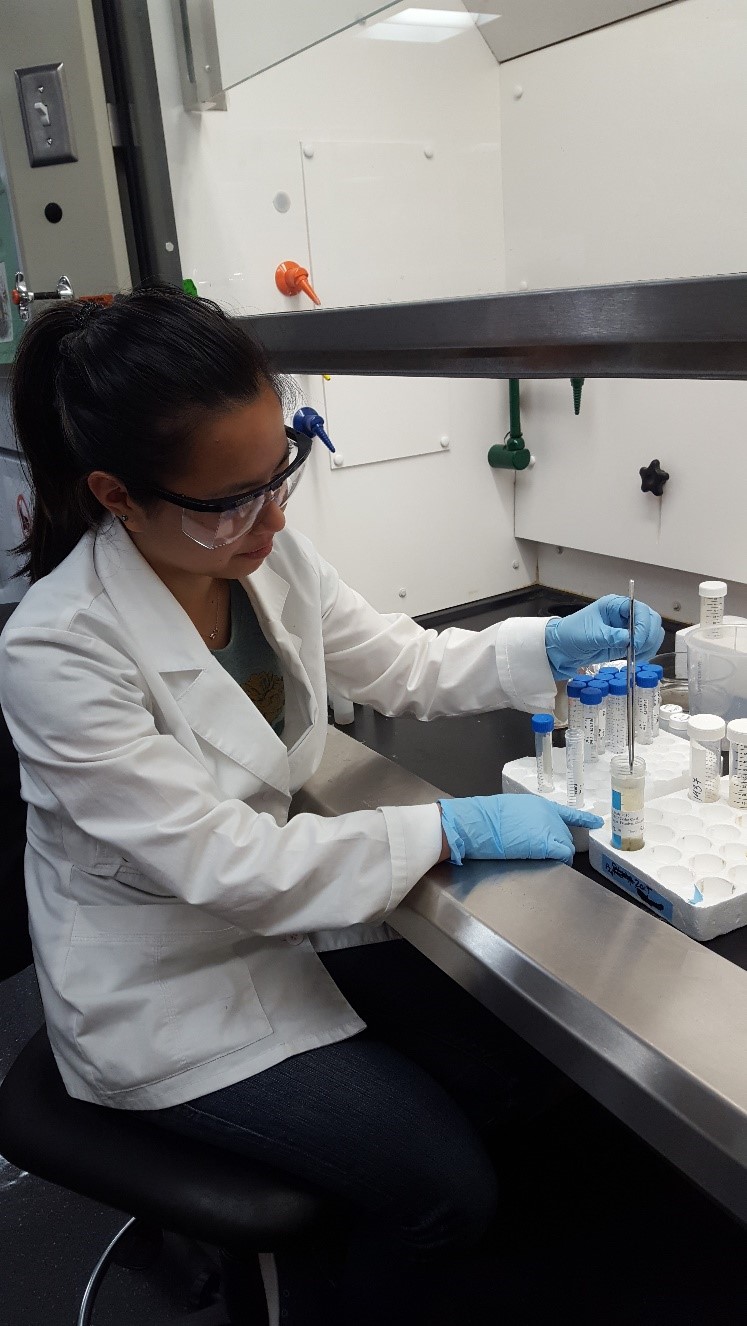
Standardized procedures should be followed when processing BMI and algae samples in the lab.Throughout analysis, laboratory performance is measured by completing internal QC checks that verify accuracy and completeness. To further ensure data quality and comparability, it is important that taxonomists maintain knowledge of local organisms and current taxonomic literature.
BMI samples are picked and sorted according to protocol and counted and identified to a standard taxonomic effort. Soft-bodied algae and diatoms are processed and identified to species level or lower. When new algal species are identified, those specimens undergo a process called harmonization. Harmonization involves sharing of high quality photographic documentation and descriptions of the specimens between two different labs. Harmonization assures the quality and comparability of algal taxonomic data.
Reference specimen collections aid in the taxonomic identification process for both BMI and algae.
Once BMI and algal specimens are counted and identified, an external QC process is completed. An independent taxonomist confirms identifications and counts of the first taxonomist, then calculates Measurement Quality Objectives (MQOs), which were established to ensure data quality. MQO error rates are evaluated to identify discrepancies between labs. To resolve discrepancies, corrective actions provide a reconciliation process.
 Data Management
Data Management
Data management is another vital component of ambient monitoring that incorporates QA measures such as uniform business rules and data review. These strategies ensure the usability of the data generated for a project.
Business Rules
Standardized language and formatting promotes consistency and prevents the misinterpretation of data. Business rules establish a uniform method of data entry that enables both project staff and end users to easily understand test results.
Data Review
Data should be reviewed by all applicable project staff, beginning with the field crew and laboratory data managers, and ending with the project managers and QA officers. This verification process ensures that sample collection details, such as the date, time, and location of the event are recorded in the proper format. Data reviewers also confirm that test conditions, such as pH, conductivity, dissolved oxygen levels, and control performance are acceptable for a given method. In addition to examining these elements, reviewers confirm that all appropriate business rules have been followed.
Water Board Databases
The Water Boards utilize various databases to store a large quantity of information about water quality above and below ground. Additional information regarding the databases managed by SWRCB are provided below.
- The California Environmental Data Exchange Network (CEDEN) houses information about the health of California’s streams, rivers, lakes, and coastal (SWAMP project data is uploaded to this database).
- The GeoTracker Groundwater Ambient Monitoring and Assessment (GAMA) Information System integrates and displays groundwater quality data on an interactive, Google-based map.
- The California Integrated Water Quality System Project (CIWQS) tracks effluent data and permit information about wastewater dischargers.
- The Storm Water Multiple Application and Report Tracking System (SMARTS) Database was developed for dischargers to electronically file their storm water permit documents.
 SWAMP Resources
SWAMP Resources
Quality Assurance
Quality Assurance Project Plan
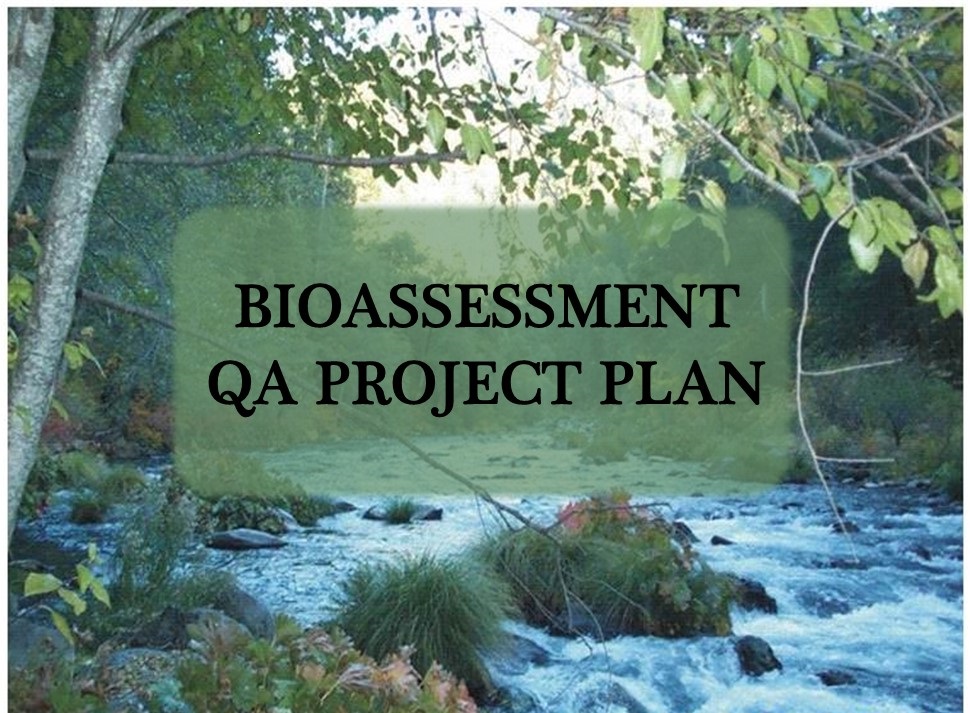 Bioassessment Program Quality Assurance Project Plan
Bioassessment Program Quality Assurance Project Plan
This Quality Assurance Project Plan (Project Plan or QAPP) establishes the requirements for collecting data as part of the Surface Water Ambient Monitoring Program (SWAMP) Bioassessment Program.
Training
College of Bioassessment
All bioassessment data collection personnel are required to complete bioassessment training with the College of Bioassessment.
SWAMP Field Methods Course
Module 7: Biological and Physical Assessments. This is an online course that introduces the concepts used in SWAMP sample collection and field analysis. Module 7 covers protocol for performing biological and physical assessments including, physical habitat analysis, benthic macroinvertebrate (BMI) sampling, and algae sampling.
Standard Operating Procedures for Field Data Collection
Collection of Field Data for Ambient Bioassessments of California Wadeable Streams: Benthic Macroinvertebrates, Algae, and Physical Habitat (2025)
These are the standard procedures designed to support general assessment of the ecological condition of wadeable streams and rivers based on the composition of the benthic macroinvertebrate and benthic algal assemblages. The procedures also produce standardized measurements of instream and riparian habitat and ambient water chemistry to support interpretation of the biological data.
Supplemental Guidance Document for SWAMP Bioassessment Field Protocol
This document is a companion to the 2025 SOP for the collection of field data for ambient bioassessments of California Wadeable streams: Benthic macroinvertebrates, algae and physical habitat. It elaborates on specific procedures to use in the field.
Bioassessment Field Data Sheets with Algae (March 2025) can be requested by contacting SWAMP@waterboards.ca.gov
California Rapid Assessment Method for Wetlands (CRAM)
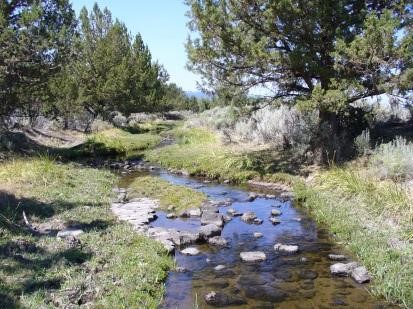 California Rapid Assessment Method for Wetlands (CRAM)
California Rapid Assessment Method for Wetlands (CRAM)
CRAM is a standardized tool for assessing the condition of wetlands and riparian habitats.
Standard Operating Procedures for Laboratory Analysis
Laboratory Processing and Identification of Benthic Macroinvertebrates in California (2012)
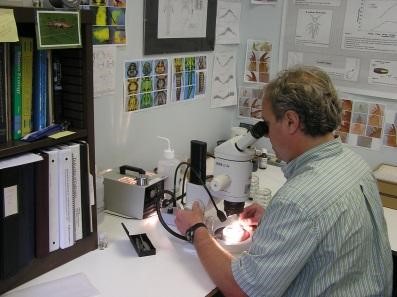 Laboratory Processing and Identification of Benthic Macroinvertebrates in California (2012)
Laboratory Processing and Identification of Benthic Macroinvertebrates in California (2012)
A document that describes the requirements and recommendations for all laboratories performing SWAMP benthic macroinvertebrate (BMI) taxonomic identifications, and those wishing to be SWAMP-comparable. This SOP also documents the full procedures of the SWAMP Quality Assurance (QA) BMI referee laboratory, the Department of Fish and Game Aquatic Bioassessment Laboratory (DFG-ABL).
Taxonomy Results Template (Benthic/Bioassessment/Algae)
External Quality Control of Benthic Macroinvertebrate Taxonomy Data Collected for Stream Bioassessment in California (2015)
A document that outlines procedures for external quality control (QC) of benthic macroinvertebrate (BMI) taxonomy data generated for SWAMP and participating SWAMP-comparable bioassessment projects.
BMI_QC_Template
A template populated by the original and the QC Laboratories during the external QC process.
Additional BMI Resources
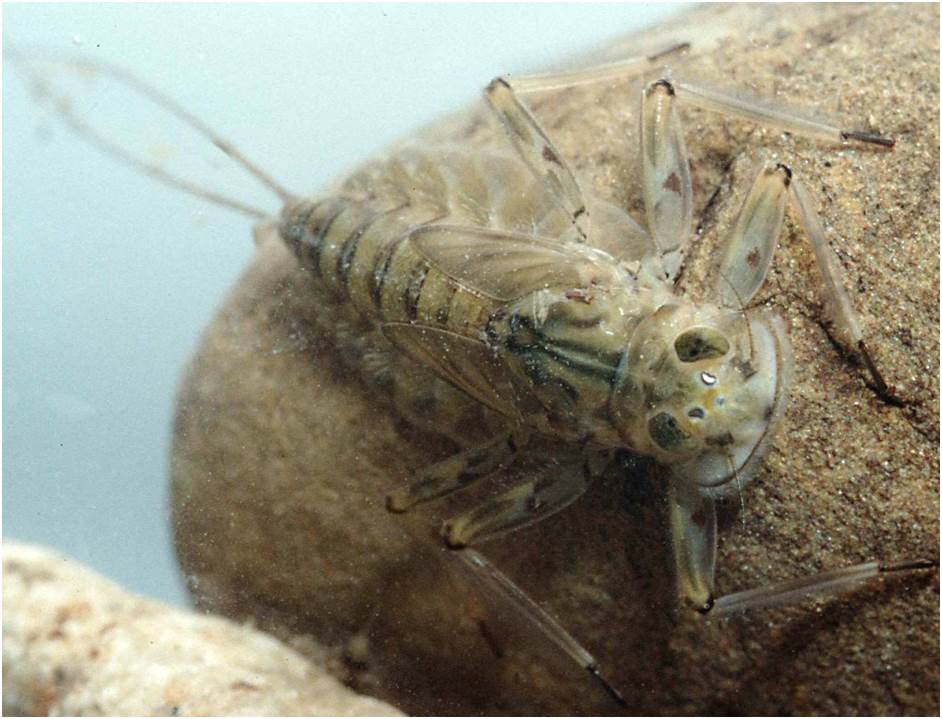 Measurement Quality Objectives (MQOs) for BMI (2020)
Measurement Quality Objectives (MQOs) for BMI (2020)
A document containing guidelines for field sample collection and handling, and laboratory analyses of BMI. These guidelines contain both requirements and recommendations for SWAMP and participating SWAMP-comparable bioassessment projects.
Laboratory Processing, Identification, and Enumeration of Stream Algae (2015)
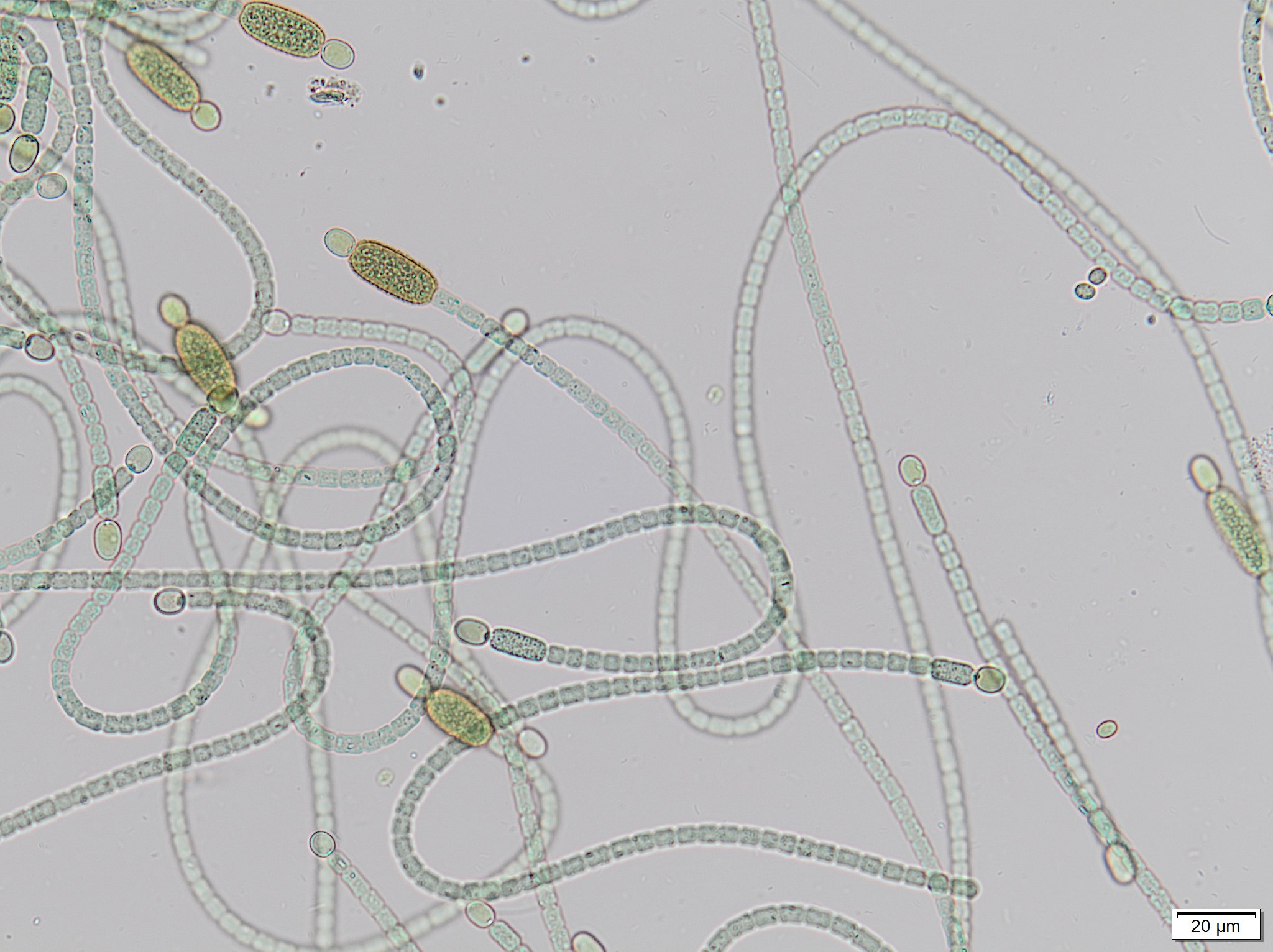 Laboratory Processing, Identification, and Enumeration of Stream Algae (2015)
Laboratory Processing, Identification, and Enumeration of Stream Algae (2015)
This document describes the methods for staff qualifications, laboratory processing, identification and enumeration, species documentation, archiving of samples and slides, quality assurance and quality control procedures, and data reporting to SWAMP.
Standard Operating Procedures for Internal and External Quality Control of Laboratory Processing, Identification and Enumeration of Stream Algae in California (2019)
A document outlining procedures for internal and external quality control (QC) of soft-bodied algae and diatom taxonomy data generated for SWAMP and participating SWAMP-comparable bioassessment projects.
- SBA External QC Submittal Data Template
- Diatom External QC Submittal Data Template
- Excel templates populated by the original and QC laboratories during the external QC process.
Additional Algae Resources
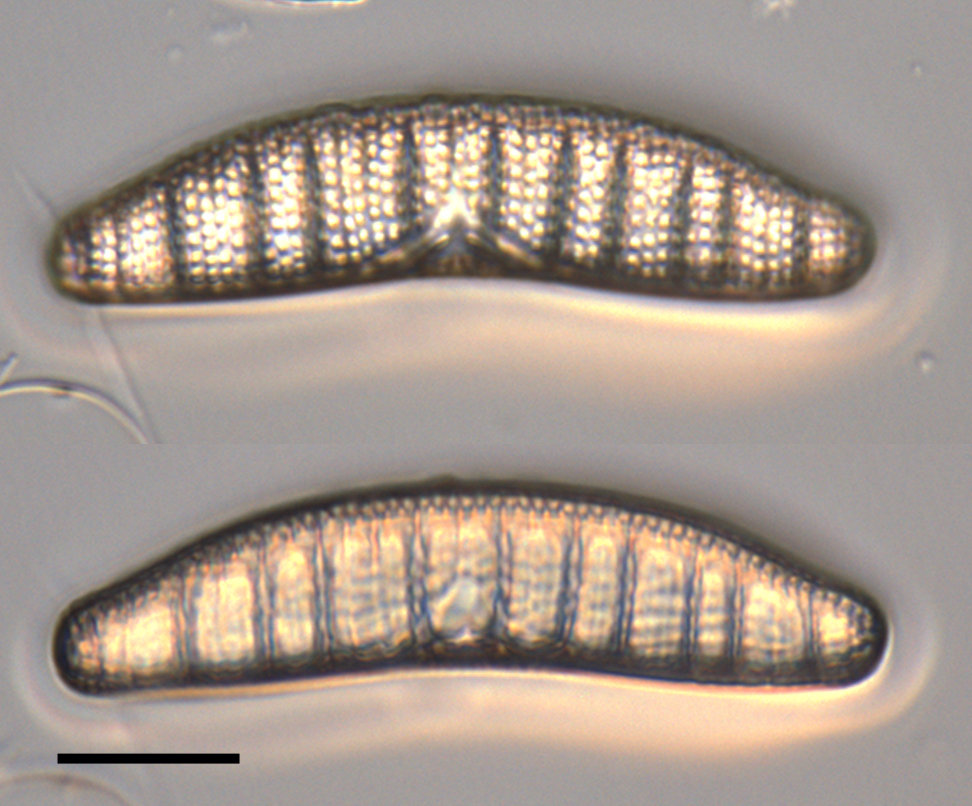 Measurement Quality Objectives (MQOs) for Algae
Measurement Quality Objectives (MQOs) for Algae
A document containing guidelines for field sample collection and handling, and laboratory analyses. These guidelines contain both requirements and recommendations for SWAMP and participating SWAMP-comparable bioassessment projects.
A Standardized Taxonomic Effort (STE) for California Stream Algae (2019)
A document that defines the standard taxonomic level information for the identification of soft-bodied algae and diatoms from California streams.
- Master Algae STE List of Names
- An Excel file containing soft-bodied algae and diatom organism names for the STE.
Benthic Chlorophyll a, Pheophytin & AFDM Conversion and Data Reporting
A document used by water quality laboratories to convert water column (mass/volume) to benthic (mass/area) for benthic Chl a, Pheophytin and Ash-Free-Dry-Mass (AFDM) samples.
 Additional Resources
Additional Resources
- The Online data Checker is provided to SWAMP team members and laboratories to check data submission files, within SWAMP 2.5 templates, for formatting, lookup list values, and SWAMP business rules.
- The California Water Boards' Performance Report 2010-2011 (Environmental Indicator: Aquatic Life Fact Sheet )
- The California Water Boards Annual Performance Report- 2015-16
- State Water Board QA/QC webpage
- SWAMP QA
- SWAMP Bioassessment Program
- California Aquatic Bioassessment Workgroup (CABW)
- SCAMIT So. California Association of Marine Invertebrate Taxonomists
- SAFIT Southwest Association of Freshwater Invertebrate Taxonomists
- Bioassessment Reports and Fact Sheets
- My Water Quality Are our streams and rivers healthy?
- Data and Interpretive Tools
- SWAMP Quality Control and Sample Handling (MQO) Guidelines
 Contact Us
Contact Us
For questions on these data types, please contact:
Algae taxonomy
(916) 341-5553
Benthic macroinvertebrates
(916) 322-2518
Physical habitat
(916) 322-2518
(916) 341-5553
Let us know how we can improve our webpage.
Please send comments and suggestions to the Office of Information Management and Analysis Help Desk: OIMA-Helpdesk@waterboards.ca.gov
Are you a SWAMP member? Click here for internal SWAMP IQ Center resources


